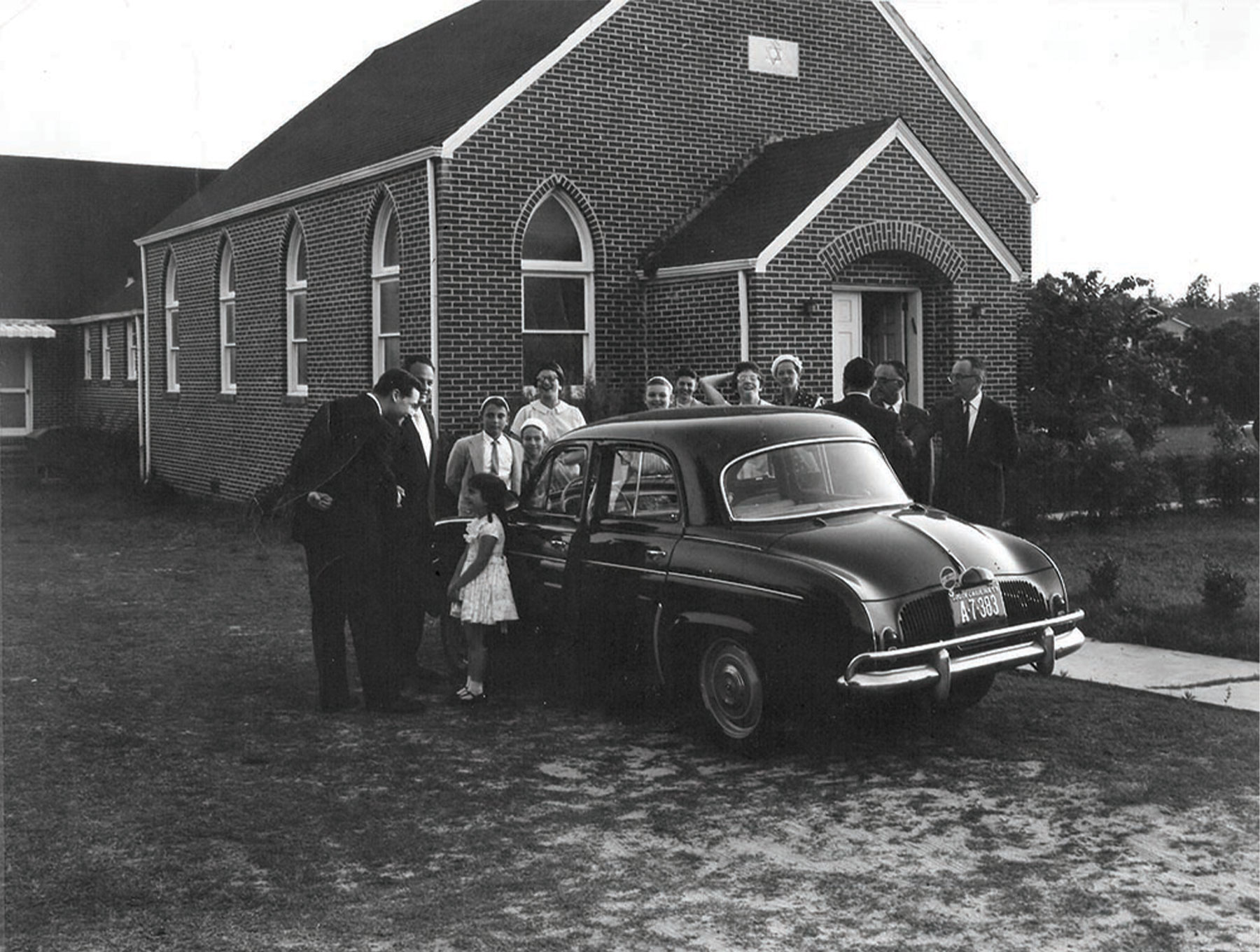
Temple Beth-Or
107 Hirsch Street
Kingstree, SC
Year Built: 1949
Architect: Unknown
Years Active: 1945 – 2005
Congregation History
Community Origins
Kingstree was settled in 1732 by forty Scots-Irish on the east bank of the Black River. It is named Kingstree because of a large white pine tree that was marked as the “King’s Tree.” The community became the Williamsburg District seat of justice in 1804 and was incorporated into a village in 1866.1 Prior to European settlement, Santee Native Americans lived in the area.2
The first known Jewish resident to settle in Kingstree was M.I. Hirsch in 1850. After he served in the Confederate Army, he was elected to be district solicitor, then a member of the school commission, and then finally elected mayor.3
Louis Jacobs was another early Jewish resident in Kingstree, hailing from Prussia and arriving in 1859. He was originally a business owner turned probate judge. Later he was elected as sheriff, returned to being a merchant, and finally was the district Postmaster until his death.4
Growth
The Jewish community in Kingstree prior to the 1900s was small, though the pace slowly picked up at the turn of the 20th century. The community remained small and as such, many families held private services in their homes.5
Beginning in the early 1940s, at least 10 families moved to the area and in 1945, the Jewish community was finally large enough to form a congregation. That congregation was named Temple Beth Or, with construction lasting from 1948 until 1949. Four Jewish communities from Kingstree, Andrews, Greeleyville, and Lake City came together for the formation of Beth Or as a Conservative synagogue.6
Despite the availability and proximity of Temple Beth Or, some families decided to continue attending services at Temple Sinai in Sumter.7 Prior to the official formation of the congregation, many Jews felt isolated. Even before and after the building, many recalled antisemitic and ignorant remarks made by the Christian majority community. One such remark included a woman saying, “I don’t care what a person’s religion is, as long as they believe in Jesus.”8
Even though the community was small, some women made the attempt to organize Sunday School classes for the children. This plan, however, did not last as many children learned about Judaism from their older relatives. In addition to Shabbat services, there were onegs, seders, parties, Purim festivals, and haphazard religious school classes.9 By the late 1950s, there were roughly 38 families and 24 children in the congregation.
The congregation never had a hired rabbi. Instead, rabbis from Congregation Emanu-El in Charleston and others would visit once a month. The congregation would also host student rabbis for Rosh Hashanah and Yom Kippur. For all other services, laymen would lead the congregation. Beth Or joined the United Synagogue of America, the organization for Conservative synagogues, in 1958.10
As has happened with many rural communities, there was a decline in membership due in part to now-grown children leaving the area, interfaith marriages, and then those that decided to leave the faith. There was an active Sisterhood, though there were no female officers until 1995. Marie Fox Grossman was both the president of the Sisterhood and became the first female president of Beth Or in 1997.11 Due to the decline in membership, the congregation started to count women as part of the minyan since there were not enough men to otherwise hold one.
Kingstree Today
Today, there is no active Jewish community in Kingstree. Beginning in the 1990s, the congregation began to decline and that eventually took its toll. The congregation stopped holding services in 2004 and in 2005, they sold the building to a local Catholic Diocese. Like many rural and small communities, Temple Beth Or was not immune to the difficulties that come with being so isolated.12
Endnotes
1 “Kingstree.”
2 “Williamsburg | County, South Carolina, United States | Britannica.”
3 “ISJL – South Carolina Kingstree Encyclopedia – Goldring/Woldenberg Institute of Southern Jewish Life.”
4 “ISJL – South Carolina Kingstree Encyclopedia – Goldring/Woldenberg Institute of Southern Jewish Life.”
5 “ISJL – South Carolina Kingstree Encyclopedia – Goldring/Woldenberg Institute of Southern Jewish Life.”
6 “ISJL – South Carolina Kingstree Encyclopedia – Goldring/Woldenberg Institute of Southern Jewish Life.”
7 “ISJL – South Carolina Kingstree Encyclopedia – Goldring/Woldenberg Institute of Southern Jewish Life.”
8 “ISJL – South Carolina Kingstree Encyclopedia – Goldring/Woldenberg Institute of Southern Jewish Life.”
9 “Turning Out the Lights | Jewish Historical Society of South Carolina.”
10 “ISJL – South Carolina Kingstree Encyclopedia – Goldring/Woldenberg Institute of Southern Jewish Life.”
11 “ISJL – South Carolina Kingstree Encyclopedia – Goldring/Woldenberg Institute of Southern Jewish Life.”
12 “ISJL – South Carolina Kingstree Encyclopedia – Goldring/Woldenberg Institute of Southern Jewish Life.”